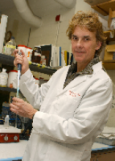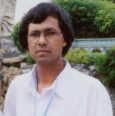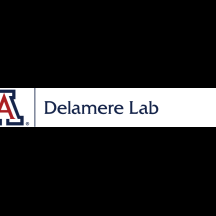Lab Members

Nick Delamere
Professor, Ophthalmology
After receiving a doctorate at the University of East Anglia in his native England, Nick D brought his work on membrane transport physiology to the University of Colorado, where he spent ten years. He moved to the University of Louisville in 1986 and then joined the University of Arizona in 2006. His laboratory studies the mechanisms which control ocular pressure, fluid movement and the regulation of ion transport molecules in lens and optic nerve. His current focus is on how cells sense and respond to mechanical distortion. Mechanosensitive ion channels like TRPV4 and TRPV1 act as sensors. In the lens, for example, TRPV4 operates as the trigger of a feedback loop that stimulates Na,K-ATPase activity
Jose Ek Vitorin
Jose's research journey started after completing a medical degree at the Universidad Autónoma de Yucatán, Mérida, México. He was trained in classical cardiac electrophysiology using intracellular microelectrodes and received a PhD from the Centro de Investigación y Estudios Avanzados (CINVESTAV), Instituto Politécnico Nacional (IPN), México City. Later on, he mastered two-electrode and single electrode voltage clamp methods in single and paired cells. His research has focused on the study of connexins, a family of integral membrane proteins that form channels. Clusters of connexins form connexons or hemichannels. When hemichannels on adjacent cells align, they form gap junctions. Gap junctions have a critical role in intercellular signaling and coordination of cell function. Unpaired hemichannels, if they open, permit the flow of certain solutes across the plasma membrane. Jose has explored the regulation of connexin channel function by voltage, acidification and phosphorylation.
Connexins do not exist in isolation. A question that remains largely unexplored is how these channel-forming proteins interact with other channels. Jose is conducting studies on the mechanism that causes TRPV4 activation to trigger connexin hemichannel opening. He also is exploring the responses of TRPM3 and piezo1 channels to subtle mechanical stimuli.

Amrit Mandal
My research interest is to understand the cellular ion transport mechanisms by different transporters (Na/H Exchangers, Na,K-ATPase, sodium calcium exchanger etc.) in optic nerve head astrocytes and in lens epithelial cells to understand the general cellular signaling events as well as initiation and progression mechanisms of different diseases like glaucoma and cataract with an eventual goal of developing therapeutics to control these diseases. Src family kinases (SFKs) are very much important in modifying Na,K-ATPase activity in different cell types. My research is focused to find SFK phosphorylation-activation mediated downstream effects in cellular sodium, proton and calcium transport.
Faiz Ur Rahman
After receiving his doctoral degree Faiz worked at the Korea Research Institute of Bioscience & Biotechnology (KRIBB) where he was involved in generating different genetic mice strains and analyzed their biological characteristic & behavioral phenotypes under the umbrella of “Korea Mouse Phenotype Center”. He studied for his PhD at the National Creative Research Laboratory for Signaling Network, Chonbuk National University South Korea. He focused on the roles of gasotransmitters i.e. carbon monoxide and nitric oxide in Ca2+ Signaling for Insulin Secretion in Type2 diabetes using mouse model. In addition, he also investigated the role of nicotinamide adenine dinucleotide (NAD), a substrate for CD38/SIRT1 enzymes in hematopoiesis regulation. He previously received an MS/M.Phil degree from the Human Molecular Genetics Laboratory at Quaid-i-Azam University, Pakistan. This involved studies on epigenetic gene regulation.

Mohammad Shahidullah
I have a long standing interest in ocular physiology. I developed an arterially perfused intact eye preparation to measure the effects of channel blockers and ion transport inhibitors on aqueous humor secretion and to study carbonic anhydrase, adenylyl cyclase, nitric oxide signaling and organic ion transporters like MRP2. I was the first to develop a reliable technique for primary culture of nonpigmented ciliary epithelium (NPE), the tissue responsible for AH secretion. I am also interested in lens ion/water homeostasis. Recently my research has focused on mechanosensitive TRPV4 and TRPV1 channels as well as connexin hemichannels and pannexins.

